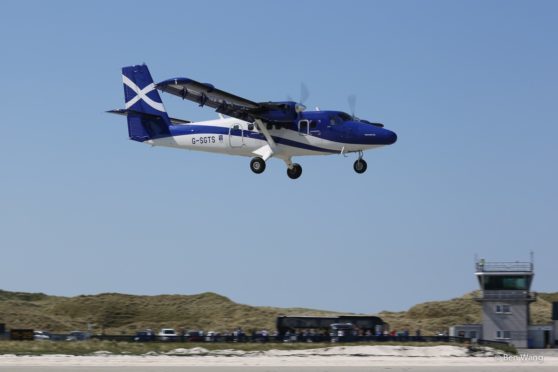Flights could be operating between Skye and the central belt within two years – at a cost of more than £2 million.
The preferred option for a trial is a 19-seat Twin Otter operating 12 flights a week from the existing airstrip at Ashaig, near Broadford, to Glasgow.
The trial is seen as a more realistic and proportionate way forward for the proposed service, which offers significant economic benefits to Skye and Lochalsh, with the potential for more than 15,000 passengers using the service each year.
A previous study has calculated that over 30 years the flights could generate in the region of £46 million if a 19-seat aircraft is used.
It is estimated that two years is the shortest realistic timescale needed to obtain licences and approvals, construct new facilities, set up an aerodrome operating team, sign agreements with airline operators and commence scheduled air services.
Members of Hitrans, the public body behind the plans, were given an update on progress being made on the project at their meeting at Stornoway yesterday.
The capital investment required to make the airport ready for a scheduled service is estimated at between £1,150,000 and £1,360,000 and the annual running costs of supporting the air service and running the airport is estimated at between £880,000 – £980,000.
Ian Blackford MP for Ross, Skye and Lochaber, said: “I very warmly welcome this, I think it is an important step forward. I have always believed that there is very good underlying demand for an air service from Skye on to Glasgow and beyond.
“I think a lot of it is about showing the proof of the concept and a pilot allows us to demonstrate that.
“This is crucial for the sustained development of Skye.”
Through consultation with stakeholders, an outline layout for the introduction of a trial service at Broadford has been prepared, which identifies provision of a 2,150sqft terminal building situated centrally with short walking distances to the car park and the apron. There will also be 30 public car parking spaces including EV charging provision, together with space for bus, taxi and drop off.
Ranald Robertson, Hitrans Partnership Director, said: “The research undertaken by the working group clearly demonstrates a demand for the service but we must be realistic in what we can achieve with the funds likely to be available. Operating a service on a trial basis is clearly going to be more affordable and our focus now must be to identify the funding to get the trial service off the ground.”
